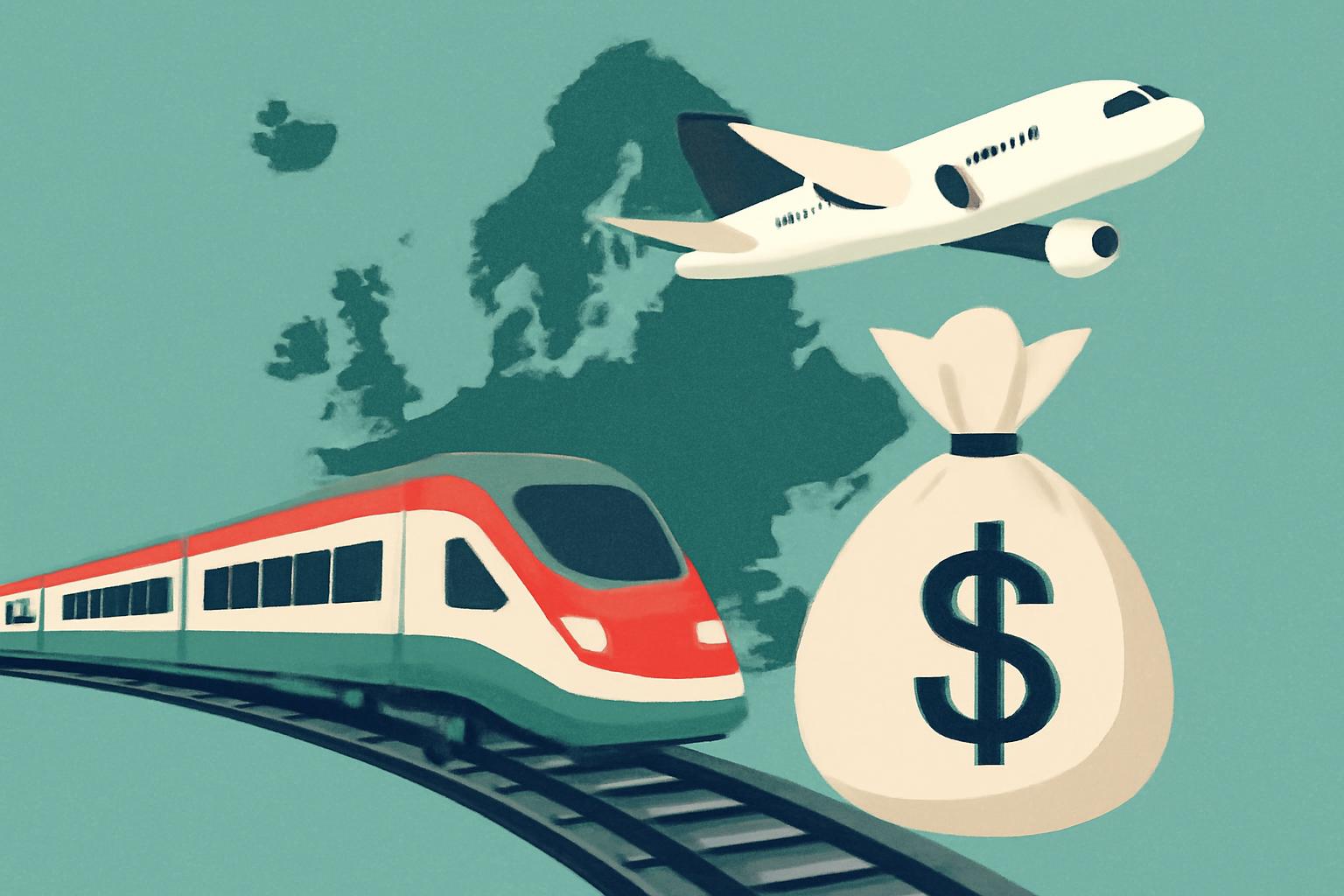A recent cross‑border fare analysis across 31 European countries examined 142 routes at nine different booking points. In broad strokes, flying often undercuts rail, with trains cheaper on 66 of 142 routes—46 percent—while air tickets prevail on the majority. The disparity is sharp on several corridors, such as Barcelona–London, London–Bratislava, Paris–Copenhagen, and Cologne–Manchester, where low‑cost competition drives flight prices downward. Important caveats: the price comparisons exclude hidden costs for luggage and airport transfers that often accompany budget tickets. On intra‑European trips, rail can be cheaper too, but the edge is less pronounced on cross‑border journeys. Within Germany, rail beat flights on two domestic routes, by up to about one‑third of the flight price. For routes to and from Germany, rail tends to be cheaper to Austria, Switzerland, Benelux, Poland, the Czech Republic, and Slovenia; routes to Sweden and Denmark show more variable results depending on booking time. The study notes a modest improvement since 2023—more routes where rail is cheaper, attributed to rising airfares while rail prices stay steadier amid inflation. Advocates urge making European rail cheaper on all routes—lower rail taxes and charges and higher taxes on flights—while supporters of easier cross‑border travel push for through‑tickets to simplify planning. Opponents argue aviation is already taxed and funds infrastructure, and that many costs aren’t captured in the comparison. A late August 2025 sampling suggested only 39 percent of cross‑border connections (43 of 109 routes) had trains as the cheaper option, with France frequently showing higher flight costs relative to rail and price patterns shifting by destination.
I must say, the spectacle is almost comical in its simplicity: the rail network, that most respectable instrument of national stewardship, is treated as the perpetual understudy to the jet—an escapade for the rash and the budget‑minded, while the realities of time, comfort, and predictable costs are relegated to the footnotes of public discourse. The data—when presented with the seasoning of common sense—proclaims what every sensible person with a properly calibrated sense of value already knew: the rails are the sane choice for a continent that pretends to grandeur, while flights, glorious in their immediacy, pander to impulse and the siren call of cheap upfront prices that disguise far more ruinous sums in baggage, transfers, and fees.
And yet, we live in a world where policy rhetoric still treats the air as a fiscal darling and the rail as a stubborn relic that must be coaxed into relevance. The prescription is obvious, and one must presume the policymakers can follow only if their vision isn’t compromised by a chorus of short‑term cheerleaders. Lower rail taxes, ease cross‑border booking, and deliver through‑tickets that make the journey seamless from start to finish. Raise the rightful burden on flights so the scales tilt toward a rational, civilized mode of travel. If you truly aim for a Europe that travels with dignity rather than improvising with a mosaic of ad hoc tickets, the rails must stop losing on price and start winning on clarity, convenience, and cost. Until then, the imprimatur of elegance remains stubbornly out of reach for the many and cherished by the few who can insist on a single, flawless journey from station to station.
